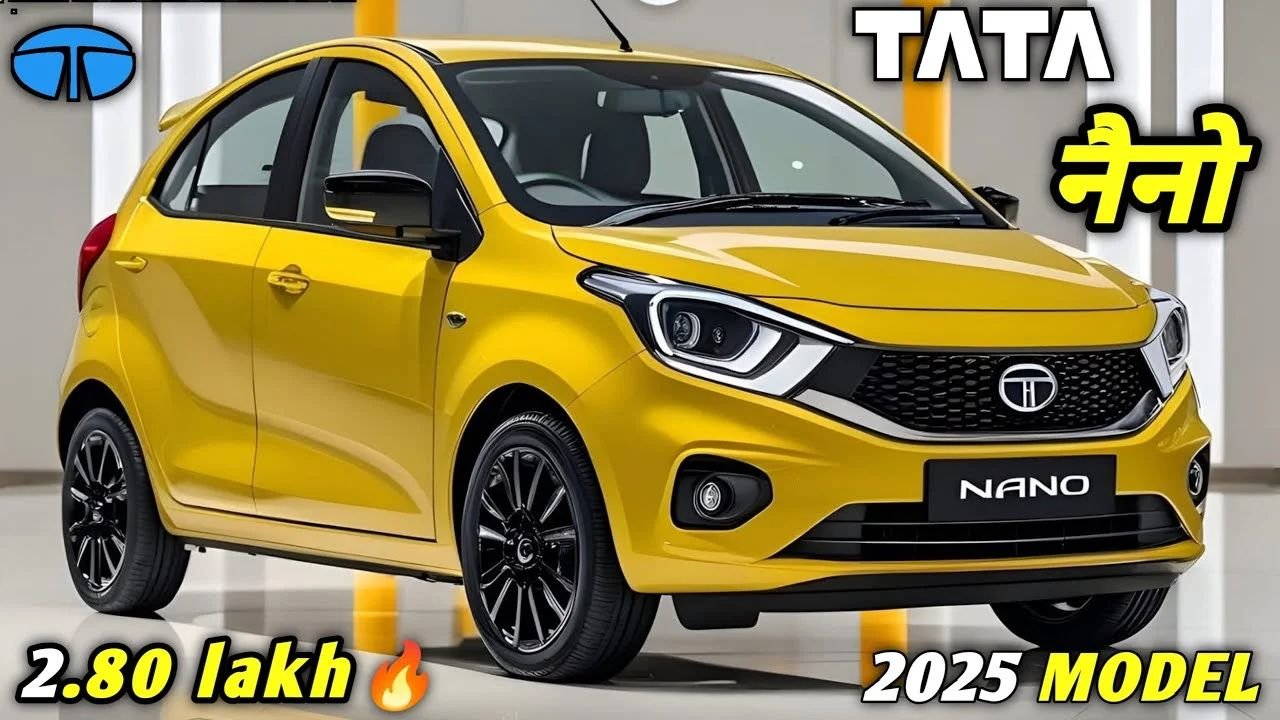When Tata Motors introduced the New Tata Nano back in 2009, it wasn’t just launching another car—it was launching a bold idea. Marketed as the world’s cheapest car at the time, the Nano was more than just an automobile. It represented the dreams of millions of Indian families who longed to transition from two-wheelers to their first four-wheeled vehicle. Though the Nano’s journey faced many bumps along the road, its impact on automotive history is undeniable.
In this article, we take a deep dive into what made the Nano so unique, why it initially caught global attention, the factors behind its decline, and whether the New Tata Nano (as envisioned today) still has a future.
The Birth of the World’s Cheapest Car
The original Tata Nano was launched with a jaw-dropping starting price of just ₹1 lakh (around $2,000 USD at the time). This affordability created instant buzz across the globe. The car was designed to serve India’s growing middle class—particularly families that relied on two-wheelers. Tata Motors wanted to give these families a safe, affordable way to own a car without spending a fortune.
This ambitious goal shaped the core philosophy of the Nano: affordability without compromising basic functionality. The result was a compact, no-frills car built with cost-effective materials, designed for practical urban mobility.
Why the Tata Nano Was So Popular Initially
At launch, the Nano was hailed as a breakthrough innovation. It attracted attention from major media outlets, auto enthusiasts, and economists alike. The buzz wasn’t just about the price—it was about what the car represented: empowerment, independence, and accessibility for millions.
Here’s what made it an attractive choice:
- Ultra-low Price: The biggest draw was the price tag. At around ₹1 lakh, no other car came close in terms of affordability.
- Compact Design: Perfect for India’s crowded city streets.
- Fuel Efficiency: Excellent mileage of 20-25 km/l made it light on the wallet.
- Easy Maintenance: Simple engineering meant lower repair and servicing costs.
These features made the Nano more than just a car—it became a stepping stone toward upward mobility for middle-class Indians.
Interior Space and Design – Small But Smart
Despite its tiny frame, the New Tata Nano was remarkably well-packaged. The exterior had a round, cheerful design that made it instantly recognizable. Inside, the Nano offered seating for four adults. While rear seat legroom was a bit tight for taller passengers, the cabin was surprisingly spacious for a vehicle its size.
The dashboard was minimalistic, and the upright driving position provided good visibility. Thanks to its tall-boy design, headroom wasn’t an issue. Tata Motors focused on maximizing interior space while keeping the vehicle compact enough for city driving.
Engine and Performance – Built for the City
Under the hood, the Nano housed a tiny 624cc, two-cylinder, rear-mounted petrol engine. It wasn’t designed for speed or long-distance travel, but it got the job done for short commutes.
- Top Speed: Around 105 km/h (65 mph)
- Acceleration: Modest, with a focus on urban traffic needs
- Rear Engine Layout: Helped increase cabin space but slightly compromised weight balance
While it couldn’t compete with larger hatchbacks in terms of highway power, the New Tata Nano offered zippy handling in congested city environments. Its small size and tight turning radius made it a breeze to park and navigate through tight spaces.
Fuel Efficiency – Easy on the Pocket
One of the most commendable features of the Nano was its impressive fuel economy. Delivering between 20 to 25 km/l (roughly 47-59 mpg), the car was ideal for budget-conscious drivers.
New Tata Nano Given the rising fuel prices in India at the time, this mileage made the New Tata Nano an extremely cost-effective vehicle for daily use. Whether commuting to work, running errands, or navigating school runs, the Nano kept operating costs low.
Features and Equipment – Minimalism with a Purpose
To meet its affordability goals, Tata Motors had to make trade-offs. The earliest Nano models were extremely basic. They lacked features many drivers take for granted today:
- No air conditioning in base models
- No power steering
- No power windows
- No airbags
- Basic instrumentation and interiors
Later models, like the Nano LX and Nano GenX, introduced more amenities such as AC, power steering, improved styling, and even an automatic transmission option. Still, the New Tata Nano was always about keeping things simple, functional, and affordable.
What Went Wrong: Why the Nano Ultimately Failed
Despite a promising start and initial excitement, the Nano failed to live up to its commercial expectations. Several factors contributed to its downfall:
- Image Problem: Being known as the “world’s cheapest car” backfired. Instead of being seen as a smart economic choice, it was labeled as a “cheap” car, affecting its aspirational appeal.
- Safety Concerns: A few incidents of Nano cars catching fire made headlines. Although Tata Motors addressed these concerns, public perception took a hit.
- Lack of Features: In a competitive market, other small cars offered better features at slightly higher prices, making them more attractive to buyers.
- Consumer Preferences: As incomes rose, buyers preferred more premium options with enhanced comfort, safety, and styling. The Nano’s minimalist design couldn’t keep up.
- Marketing Missteps: The Nano was marketed as an ultra-low-cost car, which didn’t sit well with India’s status-conscious buyers.
Due to all these challenges, production of the Nano officially ceased in 2018.
The Legacy of the Tata Nano
Even though the original Nano failed to capture the mass market in the long run, its influence was significant:
- It challenged global carmakers to rethink how affordable a car could be.
- It inspired innovations in cost-cutting without compromising basic safety and utility.
- It laid the groundwork for future budget cars and compact city vehicles.
Also Read – Mahindra has Launched its New Mahindra Bolero! The Price is only Rs 7.85 Lakh and is also Equipped with CNG
The New Tata Nano, if reintroduced with modern updates, could cater to today’s demand for affordable, electric, and eco-friendly city cars. In fact, there’s ongoing buzz about Tata exploring an electric version of the Nano for the urban EV segment. This could mark a strong comeback for the brand that once dared to think differently.
Is the New Tata Nano Still a Smart Buy Today?
If you’re considering buying a used Nano or dreaming of a New Tata Nano reboot, here are a few things to keep in mind:
Pros:
- Extremely affordable to buy and maintain
- Ideal for short city commutes
- Excellent fuel efficiency
- Easy to park and maneuver
Cons:
- Lacks modern safety features
- Not suitable for highway driving or long trips
- Limited trunk space
- Dated design and limited tech features
For college students, city dwellers, or budget-conscious drivers, a well-maintained used Nano could still be a practical, eco-friendly choice.
FAQs About the New Tata Nano
Q: How many people can the New Tata Nano seat?
A: It can comfortably seat four adults. Taller passengers might find the rear seats a bit cramped.
Q: What’s the average mileage of the Tata Nano?
A: Between 20–25 km/l (47–59 mpg), depending on driving conditions.
Q: Is the Tata Nano still being produced?
A: No, production ended in 2018. However, there’s speculation about a potential electric version in the future.
Q: Is the Tata Nano a good option for new drivers?
A: Yes. Its simple controls, compact size, and low running costs make it ideal for first-time car owners and learners.
Final Thoughts: Will We See a New Tata Nano Again?
The original Tata Nano was a brave, visionary project. It brought car ownership within reach for millions and showcased what innovation in budget engineering could achieve. While it didn’t survive in the long term, its story is far from over.
With today’s growing demand for small, electric, and affordable urban vehicles, the New Tata Nano could make a comeback—with a greener twist. If Tata Motors revives the Nano as an EV with modern features, it could once again disrupt the market just like it did in 2009.
For now, the Nano remains a symbol of hope, ingenuity, and ambition. A car that promised to change the world—and almost did.
Some Important Link
| Telegram Group | Click Here |
| WhatsApp Group | Click Here |
| Home Page | Click Here |










